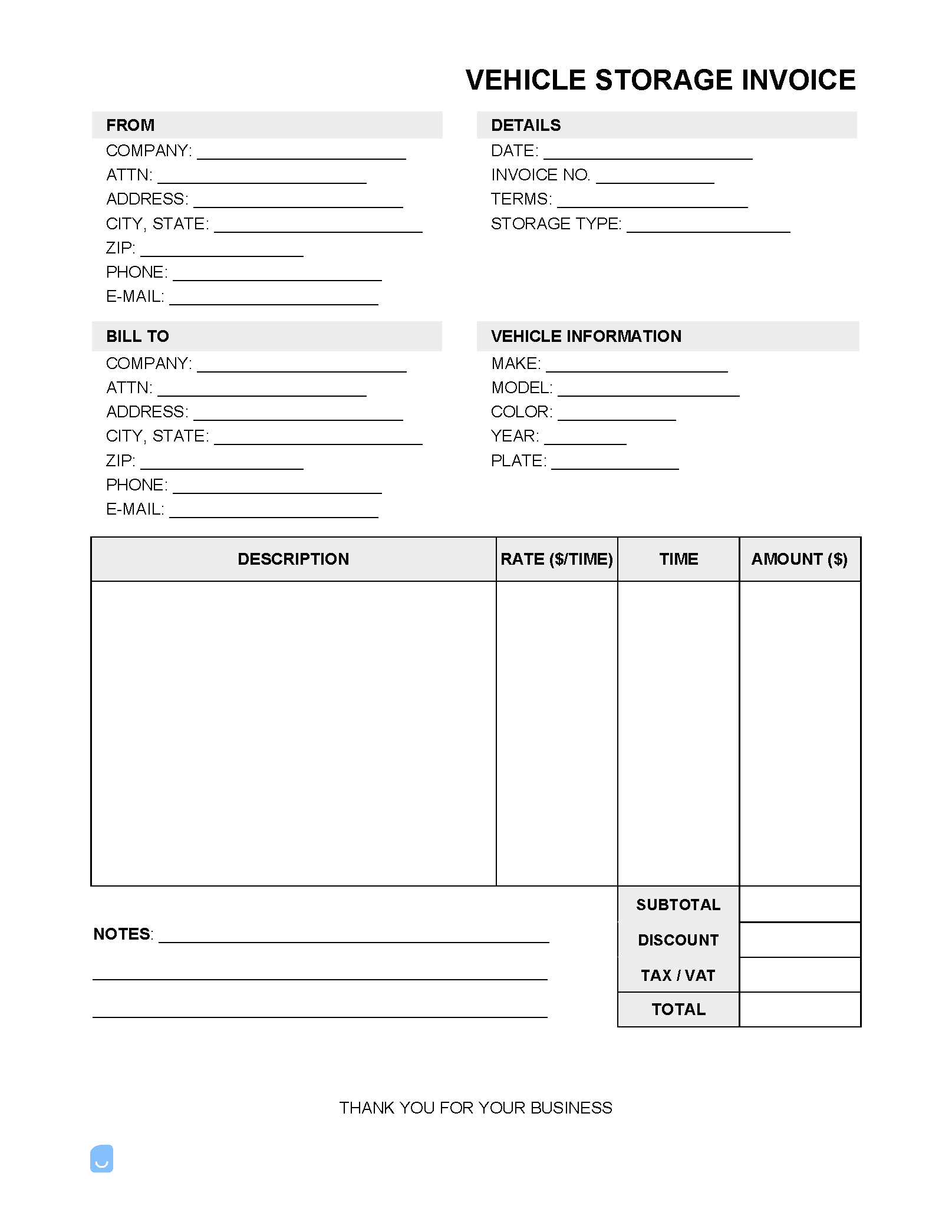Vehicle Storage Invoice Template
A vehicle storage invoice is a bill that is sent on a monthly, semi-annual, or annual basis to customers for the storage of their motor vehicles in an enclosed building or open-air lot. Vehicle storage companies can consist of general self-storage, where lots of varying sizes are rented, or vehicle-specific parking lots and facilities solely designed for medium to long-term vehicle storage.
Types of Vehicle Storage
Enclosed vehicle storage – Offers the best level of environmental protection and the highest security for stored vehicles. Often climate controlled (humidity and temperature) and completely closed off from other vehicles. Prices are high in comparison to other types of storage. Indoor car storage – Keeps vehicles stored indoors, but unlike enclosed spaces, the vehicles are stored alongside other cars, trucks, and even boats and small vehicles. The spaces are not typically climate controlled. Prices are less than those for an enclosed space, but are still considerably higher than the covered and open-air options. Covered vehicle storage – Stores vehicles outdoors under a roof with open sides. May or may not contain dividing walls separating vehicles from each other. Vehicles can be subject to heavy storms, dirt, sunlight (at certain angles), and are generally unprotected in relation to other means of storage. Relatively cheap in terms of vehicle storage. Open-air spaces – The most bare-bones type of storage, this option leaves cars and trucks in the open air in (typically) large lots. The cheapest type of storage available. Over time, vehicles wear-down and deteriorate in the elements.
Vehicle Storage Checklist
For storage companies and customers alike, understanding the proper storage process for motor vehicles can save both time and money when bringing the vehicle out of storage weeks, months, or years after being locked-away. The following steps, when followed in order, protect vehicles from deteriorating during storage in the short to medium term:
- Fully clean interior + exterior of the vehicle (waxing recommended)
- Change the oil + new filter
- Jack-up the vehicle to prevent tire flat spots
- Top off the tank
- Add fuel stabilizer to the gas tank, and run the vehicle for ~five (5) minutes
- Disconnect the battery
- Use a car cover (optional for enclosed storage)
- Get vehicle storage insurance (optional)
